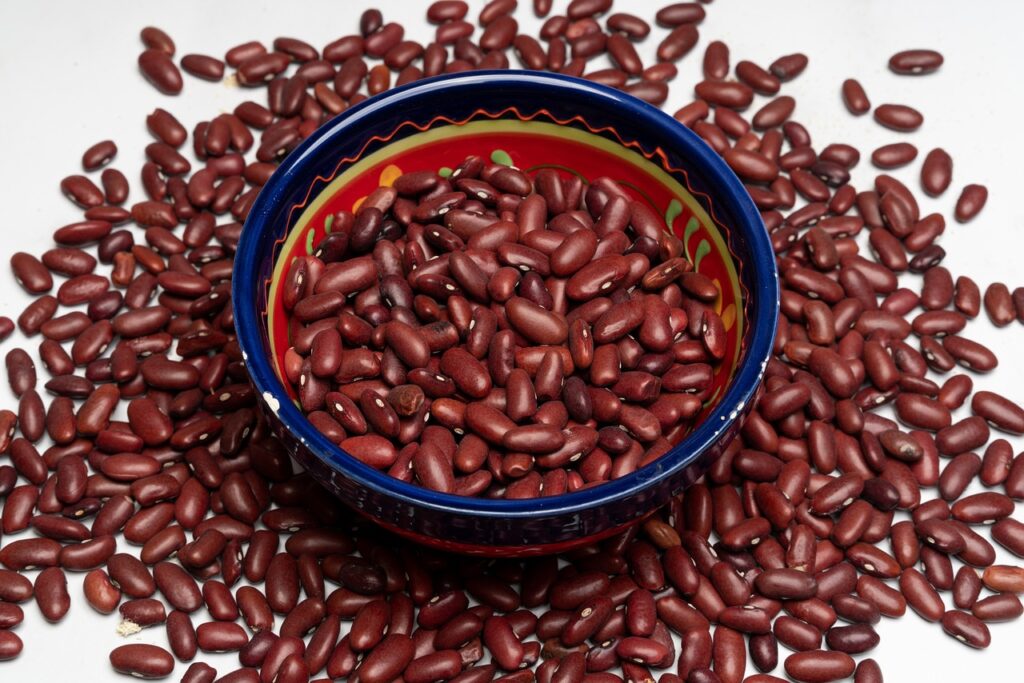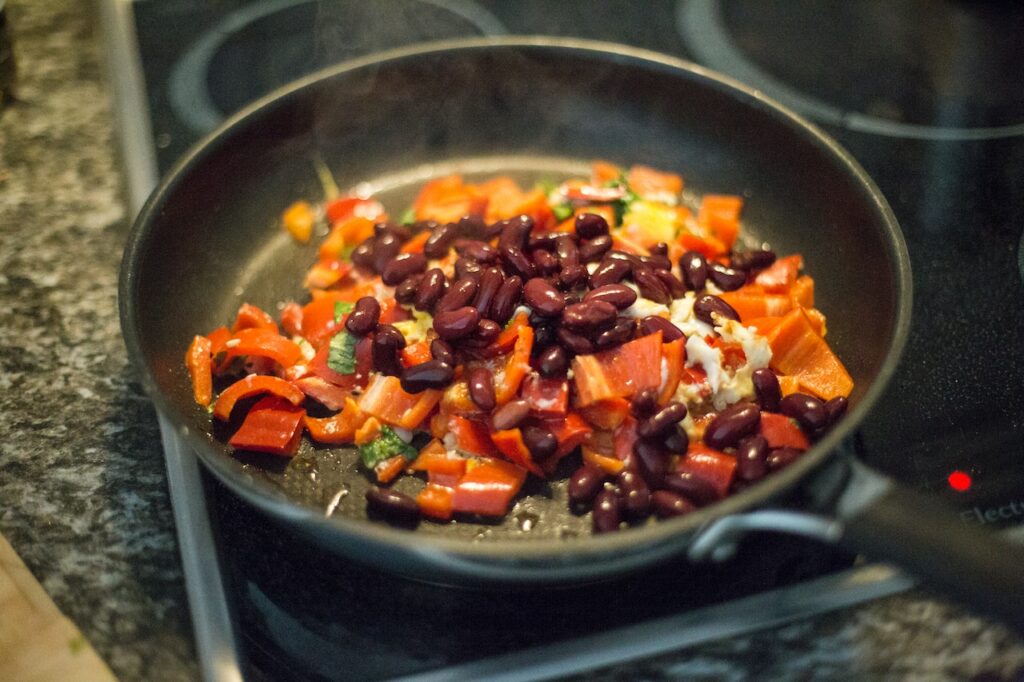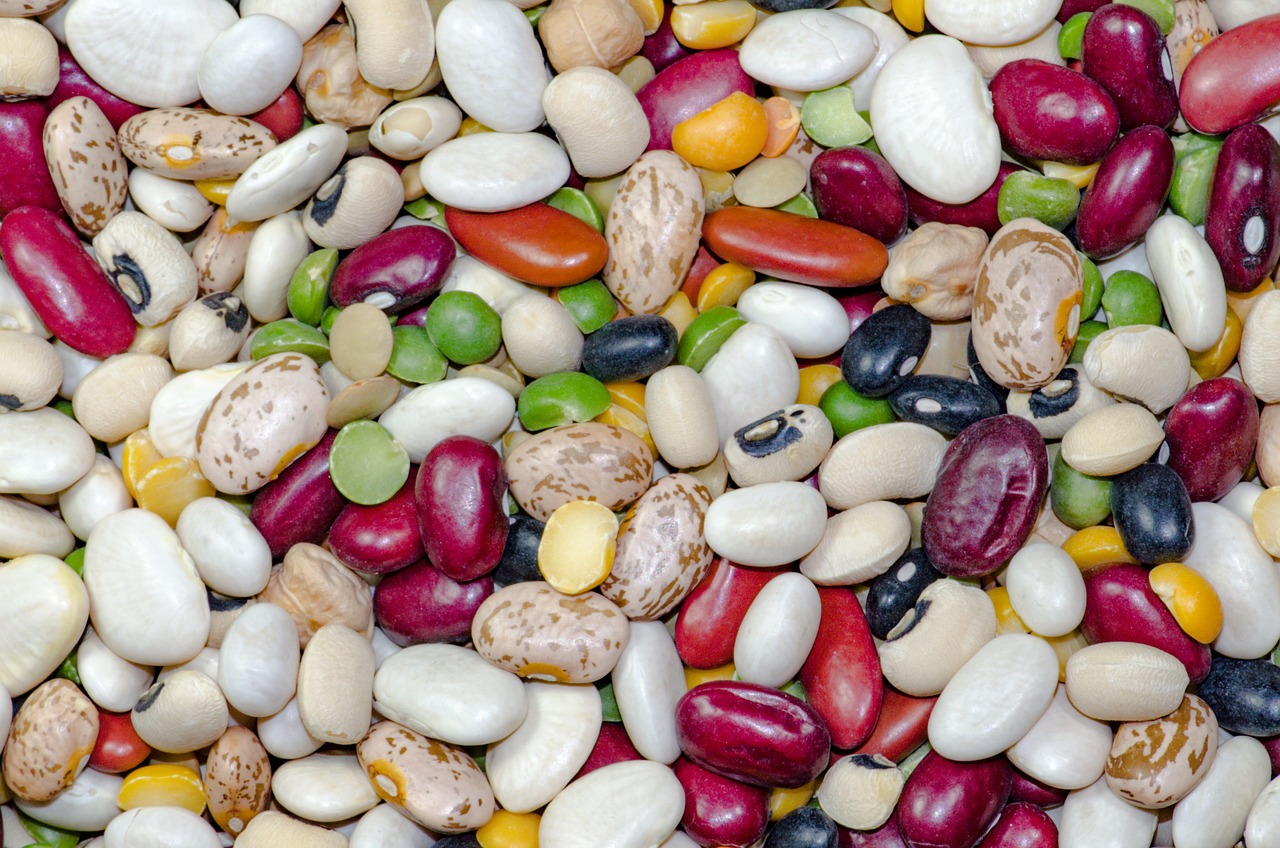The comparison between kidney vs. pinto beans can go on for ages. While there may be a few similarities, these are very different beans. But despite these differences, one can be used to substitute the other in certain instances.
This article will provide a detailed kidney vs. pinto beans comparison. We’ll unearth the similarities and differences in taste, texture, and more. Let’s dig in.
Contents
What Are Kidney Beans?
Kidney beans are a type of regular bean, or Phaseolus vulgaris. Due to its similar color and shape to a kidney, it was given that moniker.

When boiled, these beans turn reddish-brown and have a moderate flavor. And they take on the spices and herbs used to season them quite well.
Kidney beans provide astounding health benefits. Folic acid, calcium, carbohydrates, fiber, and proteins are just some of the many essential things that are present in large amounts.
What Are Pinto Beans?
Pinto beans, also called speckled beans, are oval and tan in color with reddish-brown spots on them. The Spanish word “pinto” means “painted,” So you can think of each pinto bean as a miniature work of art.
These beans are widely used in Mexican and Southwest American cuisines. They’re great in a wide range of Mexican dishes because they are soft, creamy, nutty, and earthy.
Kidney Vs. Pinto Beans: What’s the Difference?
Even though they can be used interchangeably, kidney and pinto beans differ. These are a few of the key differentiating factors between the two.
Size & Shape
Kidney beans are bigger than pinto beans, though that may not be noticeable initially. And while pinto beans are oval, kidney beans are shaped like a kidney.
Taste And Texture
Pinto beans are slightly softer and silkier than kidney beans, which have a drier texture. When cooked, pinto beans have a creamy taste, while kidney beans have a somewhat grainier texture. But both beans deliver a nutty and earthy taste, making them perfect substitutes for each other.

Nutritional Value
Regarding nutritional value, both beans are very similar but have differences here and there. The fiber in pinto and kidney beans makes you feel full and helps keep your digestive system healthy. On average, there are 15.4 grams of fiber in a cup of cooked pinto beans. For kidney beans, there are 11.3 grams in a cup.
Both pinto and kidney beans have just over 15 grams of protein per cup. A cup of pinto beans has 294 mcg of folate, while a cup of kidney beans has only 230 mcg of folate.
Each cup of pinto beans has 86 milligrams of magnesium. On average, one cup of kidney beans has 74 milligrams less magnesium than most other beans. Pinto beans and kidney beans have more than 3.5 milligrams of iron. Overall, both beans are healthy and good for you.
Conclusion
It’s not enough to just eat them. You should know your beans. And with this guide, you can quickly tell these two beans apart when comparing kidney vs. pinto beans.
